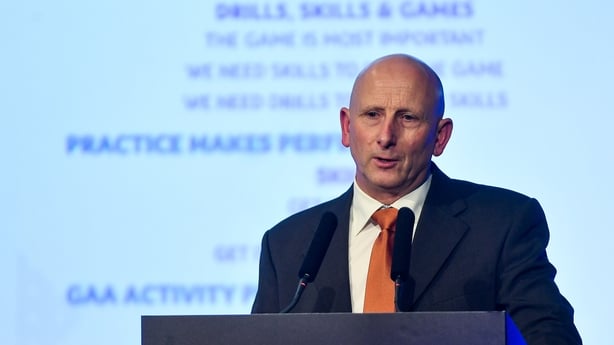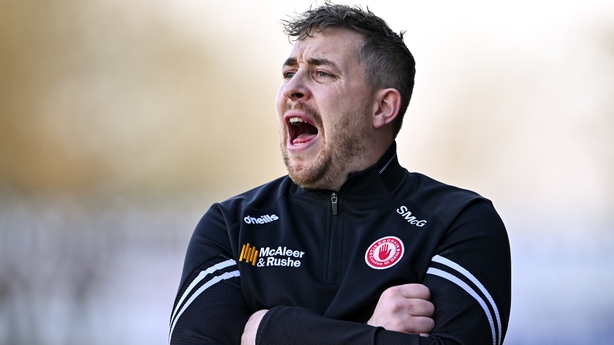Whilst still only 45, Willie Maher has a lifetime served in the game of hurling.
From Ballingarry in Tipperary, Maher captained his county to the All-Ireland minor title in 1996 before being forced to retire through injury in 2002 .
Ten years later he was back on top of the minor throne, leading Tipp to the 2012 All-Ireland crown, beating Dublin in the final with a side containing John McGrath and Barry Heffernan among others.
From there he has had roles with the Waterford senior team, the Tipperary Under-21s as well as club sides in Dublin and Kilkenny.
Last summer, he stepped down as Laois manager after they fell agonisingly short against Offaly in the Joe McDonagh Cup decider.
Maher was announced as the GAA's new Head of Hurling last week; it’s a role that will see him lead a strategic plan to support the promotion and development of hurling among lower tier counties.
For hurling, it was a badly needed appointment, coming three years on from the end of Martin Fogarty’s reign as National Hurling Co-ordinator.
Like Paudie Butler before him, Fogarty travelled the roads of Ireland in the cause of growing the game, seeking to raise its profile above the line from Dublin to Galway.
The efforts of Butler and Fogarty will now be built on by Maher, who has a wide remit and a broad job description.

At the top level the game has never been better. The Munster Hurling Championship is one of the prized jewels in the GAA’s crown in terms of quality, entertainment, drama and gate receipts.
Munster's report to their annual convention last week highlighted how the senior hurling championship returned a gross gate of €6.79 million last year.
This amounted to 85% of the council's total gate receipts. Overall gate receipts rose from €6.5 million in 2023 to just over €8 million in 2024
Over the last decade, seven different counties have appeared in at least two All-Ireland finals, whilst eight counties have made it to two provincial finals or more.
Although the game is motoring well at the elite end, there remains a desire to bring another couple of teams up to that highest level.
This will take time. In 1964 it was estimated there were nine tier one counties, and there hasn’t been much upward movement on that front over the past six decades.
On the ground, however, there are more pressing priorities – like keeping the game alive, in some instances.
In their pre-Christmas presentation, the Hurling Development Committee unveiled their desire to "develop a toolkit, based on best practices, to promote hurling in communities".
It’s a simple desire but one that could well be Maher’s north star – to simply grow the game where he can.
From his perspective, Tyrone manager Stephen McGarry says they need more young people being exposed to the game in primary schools.
"Willie’s appointment is hugely positive, and it is badly needed. Martin (Fogarty) did unreal work up in Ulster before him and hopefully we can drive it on again. Up here, we need to set up a more structured basis that all schools have a presence for hurling and camogie," he tells RTE Sport.
"Primary schools are the place to identify the game to them and really get them to fall in love with it. Something needs to be set in place in that regard.
"Clubs are struggling to get underage volunteers into coach from ages 10 – 18 and the process of coaching kids has to be a bit less daunting so clubs can get more volunteers in. That’s an issue all over the country.
"Then how can we upskill our coaches? Can the GAA provide a pathway for hurling coaches in lower tier counties as much as for the players?"

Behind the scenes, work has been ongoing and continuing.
Over the past few years, the GAA brought in the Táin Óg League, the Cú Chulainn League and the Leinster Club League – all three of those competitions are working and give players in emerging counties meaningful fixtures.
Participation rates have risen in the Táin Óg League, with 192 teams entering in recent editions. This was a whopping 57% increase on the 2021 numbers.
Croke Park sent equipment packs totalling 750 helmets, 500 hurleys, and 6,200 sliotars to 85 clubs from the 15 counties that entered.
The inaugural Cú Chulainn League saw 54 teams from 31 clubs taking part and these teams also received equipment packs for participation, up to €1,500 worth of gear depending on how many age grades they competed in.
The growth of these competitions and the support from central level signals what can be achieved.
McGarry says every help is welcome.
"We want more and continued guidance in terms of how we set things up," he says. "That help, getting coaches out, upskilling them, getting into schools, developing the pathway – that’s what is needed here."
The Tyrone boss has heard it said that the key objective for the new head of hurling should be to bring more counties up to Liam MacCarthy standard.
However, he reckons the main problems are further down the ladder.
"And at this level, small wee changes can mean so much," he adds.
"Young hurlers from Tyrone, Armagh, Donegal, Fermanagh and the like could name all those top hurling teams that they watch on TV.
"They would love to have those players come up as much as possible to meet them. Even that would really help to push the product, get the buzz going and inspire.
"Wee small things like that mean so much to kids. The fact is that every county will have different needs and requirements. And those would be the main ones up here."


